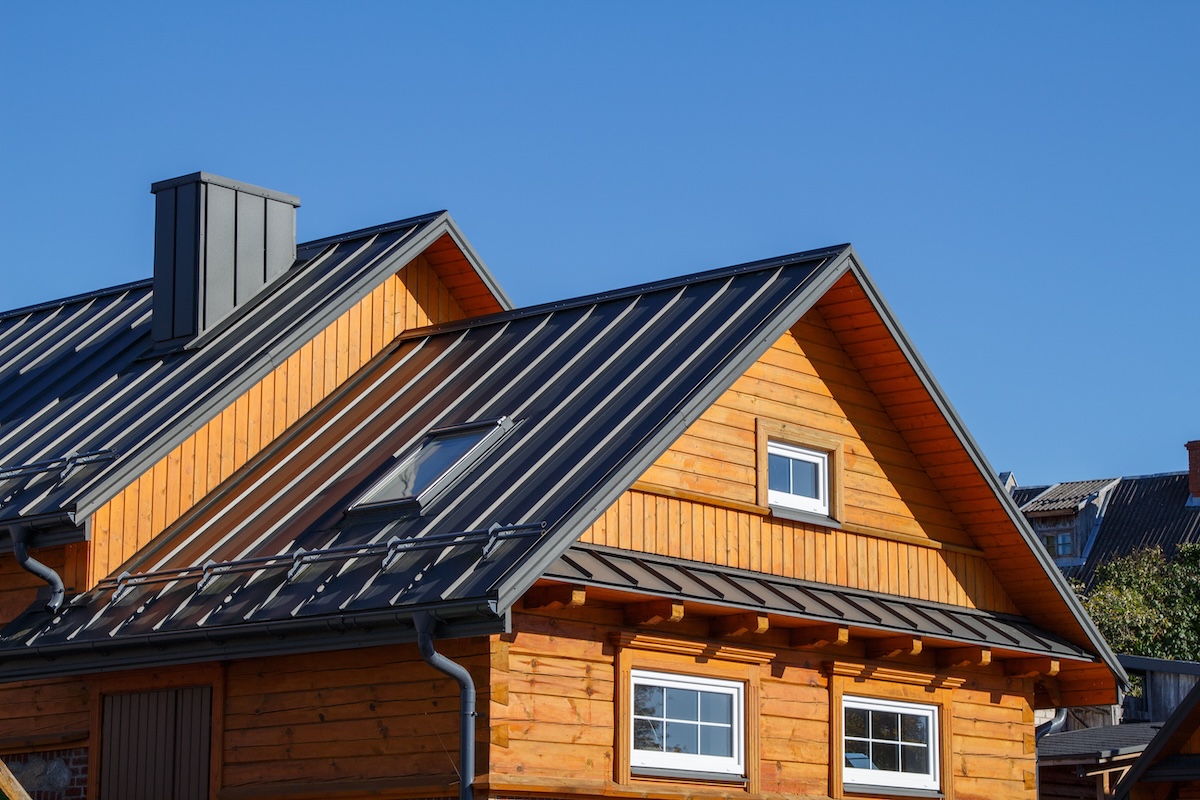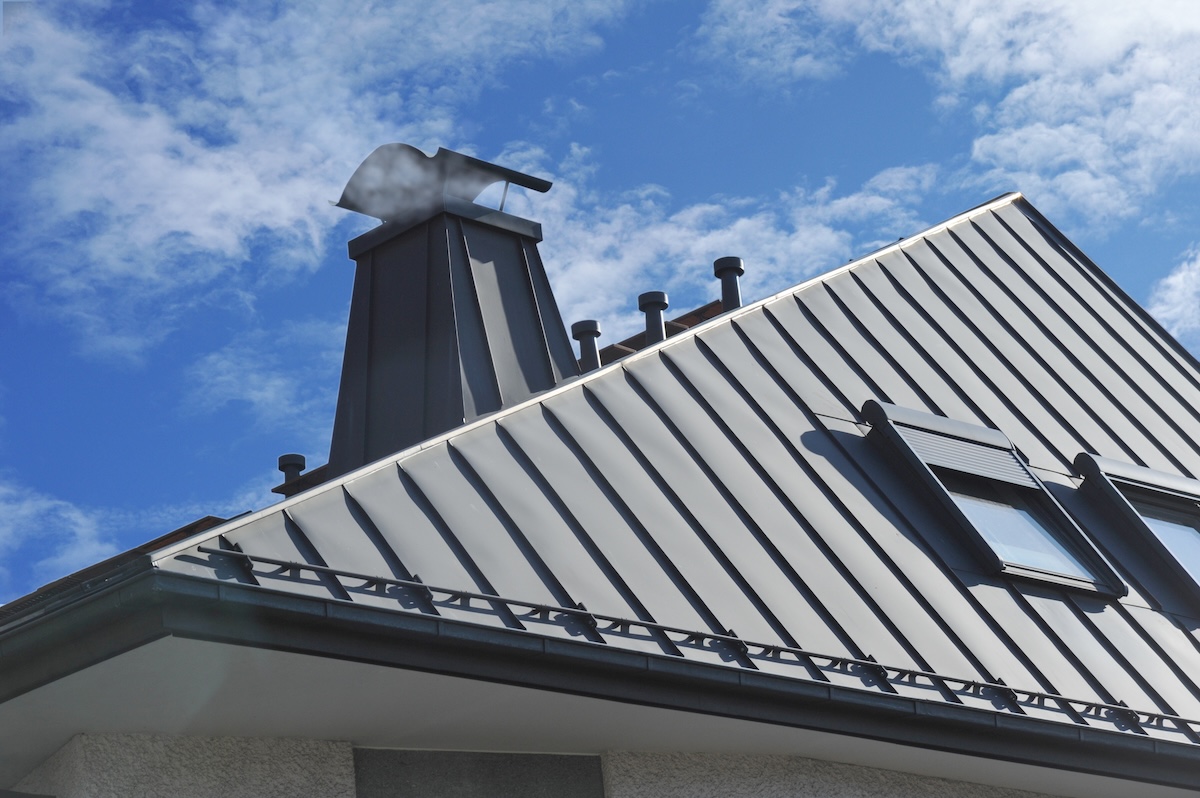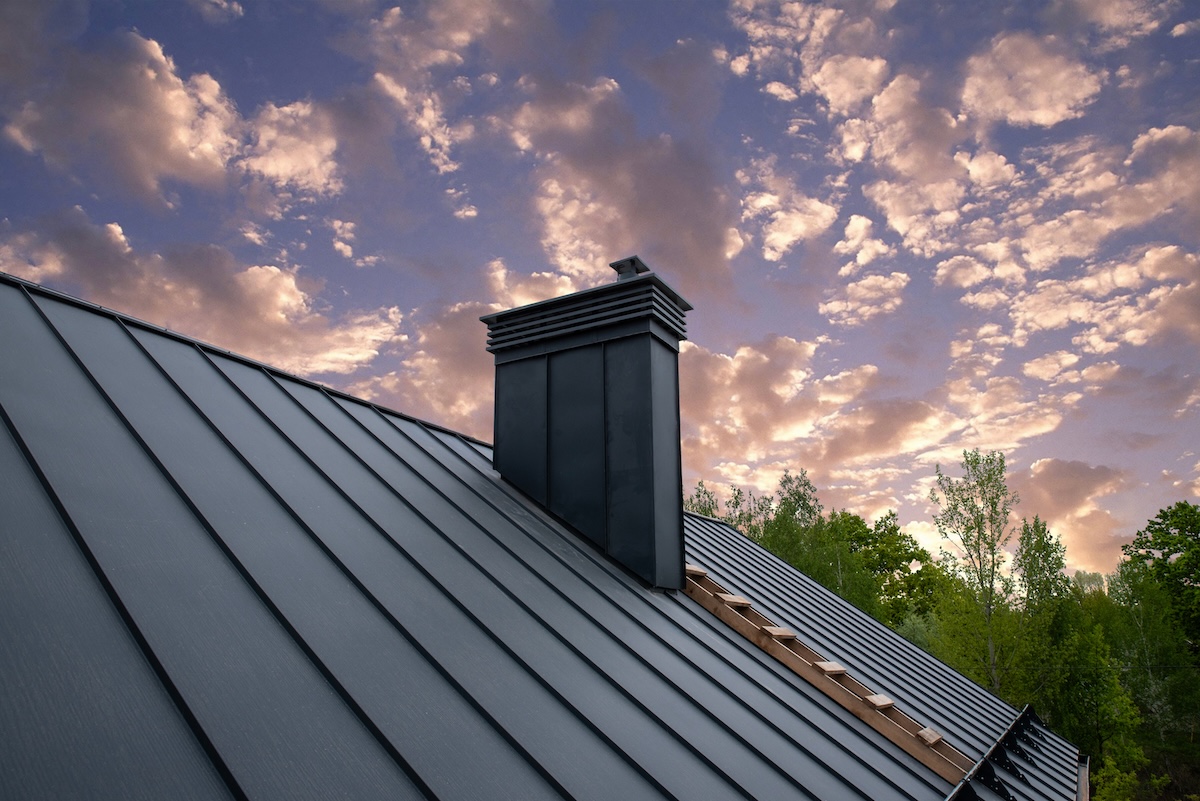When you’re considering a roofing upgrade, one of the most important questions you’ll ask is how long does a metal roof last? Metal roofing has gained popularity among homeowners for good reason—it offers exceptional durability and longevity that far exceeds traditional roofing materials. If you’re exploring your roofing options and want to make an informed decision about your home’s protection, understanding metal roof lifespan is crucial.
This comprehensive guide will cover:
- The expected lifespan of different metal roofing materials
- Factors that influence metal roof durability
- Maintenance requirements to maximize your roof’s life
- Cost-benefit analysis compared to traditional roofing materials
- Signs that indicate when your metal roof needs attention
🏠 Why Metal Roof Lifespan Matters for Homeowners

Understanding metal roof longevity is essential for making smart home improvement decisions. Your roof represents one of the largest investments in your property, and choosing materials that offer maximum durability ensures you get the best return on that investment.
Metal roofing provides several key advantages that directly impact its lifespan:
- Weather resistance: Metal roofs withstand extreme weather conditions including high winds, hail, and temperature fluctuations
- Fire resistance: Metal materials offer superior fire protection compared to organic roofing materials
- Pest resistance: Unlike wood or asphalt, metal roofing doesn’t attract insects or provide nesting opportunities for rodents
- Corrosion resistance: Modern metal roofing includes protective coatings that prevent rust and deterioration
- Energy efficiency: Reflective properties reduce cooling costs and thermal stress on the roof structure
🔎 4 Different Metal Roofing Materials: How Long They Last

Metal roofing encompasses several material types, each with distinct characteristics and lifespans. Understanding these differences helps you choose the best option for your specific needs and budget.
1. Steel Roofing Lifespan
Steel roofing typically lasts 40-70 years depending on the coating and gauge used. Galvanized steel offers good durability at an affordable price point, while Galvalume steel provides enhanced corrosion resistance.
- Premium steel roofing with stone-coated finishes can last up to 50 years
- Proper installation and maintenance can extend steel roof life to the upper end of this range
2. Aluminum Roofing Durability
Aluminum roofing systems can last 50-70 years due to their natural corrosion resistance. This material performs exceptionally well in coastal environments where salt air accelerates deterioration in other metals.
- Aluminum’s lightweight nature reduces structural stress
- Natural oxidation creates a protective layer that prevents further corrosion
3. Copper Roofing Longevity
Copper roofing represents the premium end of metal roofing with lifespans exceeding 100 years. Historic buildings with original copper roofs from the 1800s still perform effectively today.
- Develops an attractive patina over time that enhances protection
- Requires minimal maintenance once properly installed
4. Zinc Roofing Performance
Zinc roofing offers 80-100 year lifespans with proper installation. This material naturally heals minor scratches through oxidation, maintaining its protective properties over decades.
- Self-healing properties make zinc ideal for areas with frequent hail
- Environmentally friendly option with high recycling potential
⚡ Factors That Impact Metal Roof Lifespan
Several environmental and installation factors significantly influence how long your metal roof will last. Understanding these variables helps you make informed decisions and take appropriate protective measures.
Climate and Weather Conditions
Your local climate plays a major role in metal roof performance. Areas with frequent temperature fluctuations, high humidity, or salt air exposure present unique challenges that can affect longevity.
- Temperature extremes: Frequent freeze-thaw cycles can stress metal roofing systems, particularly at seams and fastening points.
- Coastal environments: Salt air accelerates corrosion in certain metals, making material selection critical for oceanfront properties.
- High wind areas: Proper fastening becomes essential in regions prone to severe storms or hurricanes.
Installation Quality
Professional installation directly impacts metal roof lifespan. Proper techniques ensure optimal performance and prevent premature failure from installation defects.
- Fastener placement: Incorrect fastener installation creates weak points that allow water infiltration and wind damage.
- Sealing and flashing: Quality sealing around penetrations and transitions prevents moisture intrusion that leads to structural damage.
- Ventilation systems: Proper ventilation prevents moisture buildup and temperature extremes that stress roofing materials.
Maintenance and Care
Regular maintenance significantly extends metal roof life by addressing minor issues before they become major problems.
- Annual inspections: Professional inspections identify potential problems early when repairs are simple and affordable.
- Debris removal: Keeping gutters clean and removing accumulated debris prevents moisture retention and corrosion.
- Coating maintenance: Reapplying protective coatings as needed maintains the roof’s weather resistance.
💰 Cost-Benefit Analysis: Metal vs. Traditional Roofing

While metal roofing requires a higher initial investment than asphalt shingles, the long-term value proposition often favors metal materials. Understanding the total cost of ownership helps you make financially sound decisions.
Initial Investment Comparison
Metal roofing typically costs 2-3 times more than asphalt shingles initially. However, this higher upfront cost spreads over a much longer lifespan.
Replacement Frequency
Asphalt shingles require replacement every 15-25 years, while metal roofs last 40-100 years depending on material choice. This means you might replace an asphalt roof 3-4 times during a metal roof’s lifespan.
Energy Savings
Metal roofing’s reflective properties reduce cooling costs by 10-25% annually. These savings compound over the roof’s lifespan, offsetting the initial cost premium.
Insurance Benefits
Many insurance companies offer discounts for metal roofing due to its fire resistance and storm durability. These annual savings add up significantly over time.
Home Value Impact
Metal roofing typically increases home resale value more than traditional materials, providing immediate return on investment if you sell your property.
🔧 Maximizing Your Metal Roof’s Lifespan
Taking proactive steps to maintain your metal roof ensures you achieve maximum longevity and protect your investment. Regular attention to key maintenance areas prevents minor issues from becoming costly problems.
Addressing minor repairs promptly prevents them from escalating into major problems. Small scratches in protective coatings should be touched up quickly to prevent corrosion. Loose fasteners need immediate attention to maintain structural integrity during storms.
When you’re ready to invest in a durable metal roofing system that will protect your home for decades, contact Maumee River Roofing for a professional consultation. Our experienced team will help you choose the right metal roofing material and ensure proper installation for maximum longevity.
